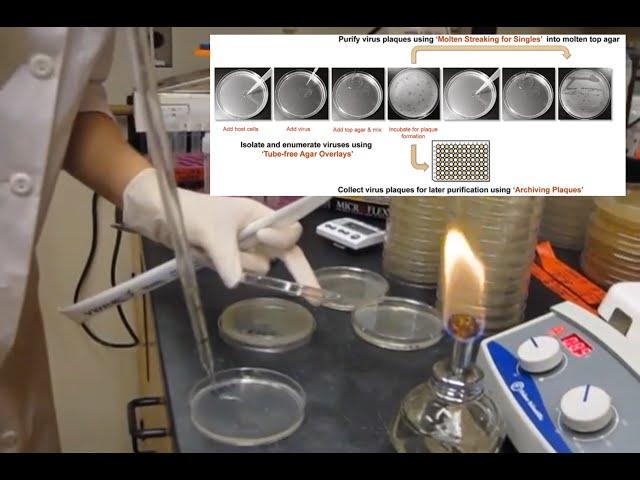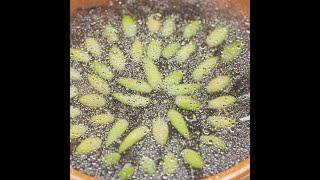
Demo of the quick & easy tube-free agar overlay for phage discovery, plaque assays, and purification
Are you plating #phage using the classical agar overlay method?
This video demos the tube-free agar overlay and streaking-for-singles #methods, originally described in our MethodsX paper "Streamlining standard bacteriophage methods for higher throughput" (bit.ly/3DSSrV9). These approaches are tiny tweaks on the classical agar overlay, commonly used in microbiology to study bacteriophages, that save time and materials when doing plaque assays and purifying phages. We hope you love them as much we do!
In the video we demonstrate using the tube-free method to purify phage plaques by serial re-streaking - just as you would do with a bacterial colony. You can read the steps in detail at the protocols.io (bit.ly/3Oqyw4U), and here are the captions included in the first minute or so of the video:
- First, add bacterial culture (e.g. 150ul of overnight) directly to the bottom agar.
- Second, add molten top agar (e.g. 2ml of 0.3% agar) directly onto the bottom agar.
- Third, swirl the plate to mix the bacteria and molten top agar and to spread the mix across the entire surface of the plate.
- Fourth, to use this method for purifying phages, you need a clean toothpick or tip. Insert the toothpick or tip right into an isolated plaque from a source plate. And then streak it into the still-molten top agar, use three different toothpicks to be sure to get single plaques.
- From here on, we'll repeat this a couple more times - remember you can also add phages directly to your bacterial drop to use the tube-free method for doing plaque assays instead.
MethodsX paper: https://doi.org/10.1016/j.mex.2018.01.007
protocols.io: https://www.protocols.io/researchers/kathryn-kauffman
This video demos the tube-free agar overlay and streaking-for-singles #methods, originally described in our MethodsX paper "Streamlining standard bacteriophage methods for higher throughput" (bit.ly/3DSSrV9). These approaches are tiny tweaks on the classical agar overlay, commonly used in microbiology to study bacteriophages, that save time and materials when doing plaque assays and purifying phages. We hope you love them as much we do!
In the video we demonstrate using the tube-free method to purify phage plaques by serial re-streaking - just as you would do with a bacterial colony. You can read the steps in detail at the protocols.io (bit.ly/3Oqyw4U), and here are the captions included in the first minute or so of the video:
- First, add bacterial culture (e.g. 150ul of overnight) directly to the bottom agar.
- Second, add molten top agar (e.g. 2ml of 0.3% agar) directly onto the bottom agar.
- Third, swirl the plate to mix the bacteria and molten top agar and to spread the mix across the entire surface of the plate.
- Fourth, to use this method for purifying phages, you need a clean toothpick or tip. Insert the toothpick or tip right into an isolated plaque from a source plate. And then streak it into the still-molten top agar, use three different toothpicks to be sure to get single plaques.
- From here on, we'll repeat this a couple more times - remember you can also add phages directly to your bacterial drop to use the tube-free method for doing plaque assays instead.
MethodsX paper: https://doi.org/10.1016/j.mex.2018.01.007
protocols.io: https://www.protocols.io/researchers/kathryn-kauffman
Тэги:
#phage #bacteria #microbiology #agar_overlay #bacteriophage #biology #science #plaque_assayКомментарии:
Our $100k Bahamas Luxury Yacht Vacation!
Enes Yilmazer
THLARAUVA TAWNGTAI DAN/PATHIAN CHAKNA RINCHHAN/PATHIAN DUH ZAWNGA TAWNGTAI/Evan Zothansanga Chongthu
Pathian Thutak Puangtute
Should You Sue the Watchtower?
Fear to Freedom
【RPG第二回】什麼是禱讀?該如何進行?
國度復興合一禱告聯盟 Kingdom Revival United Prayer Alliance


























